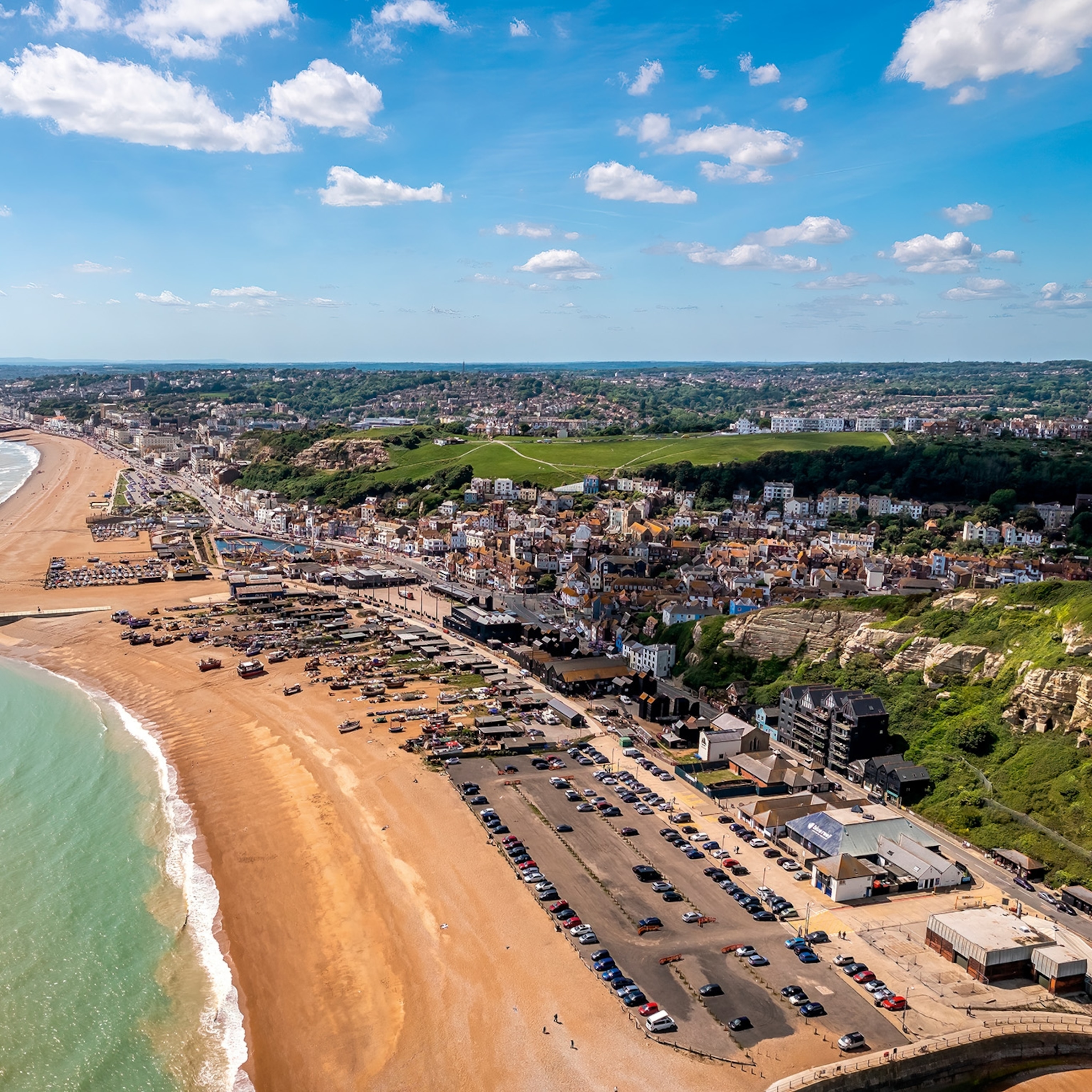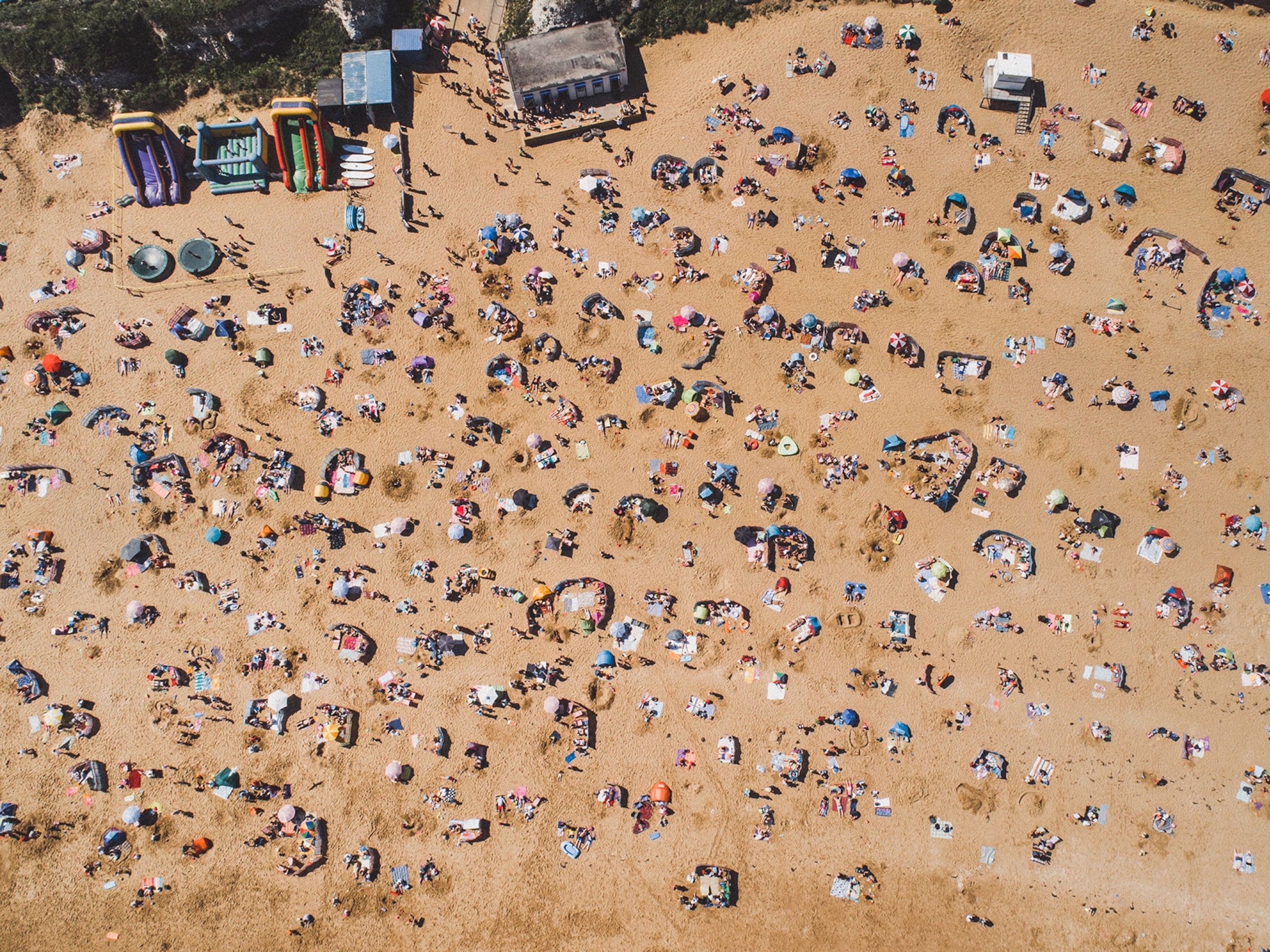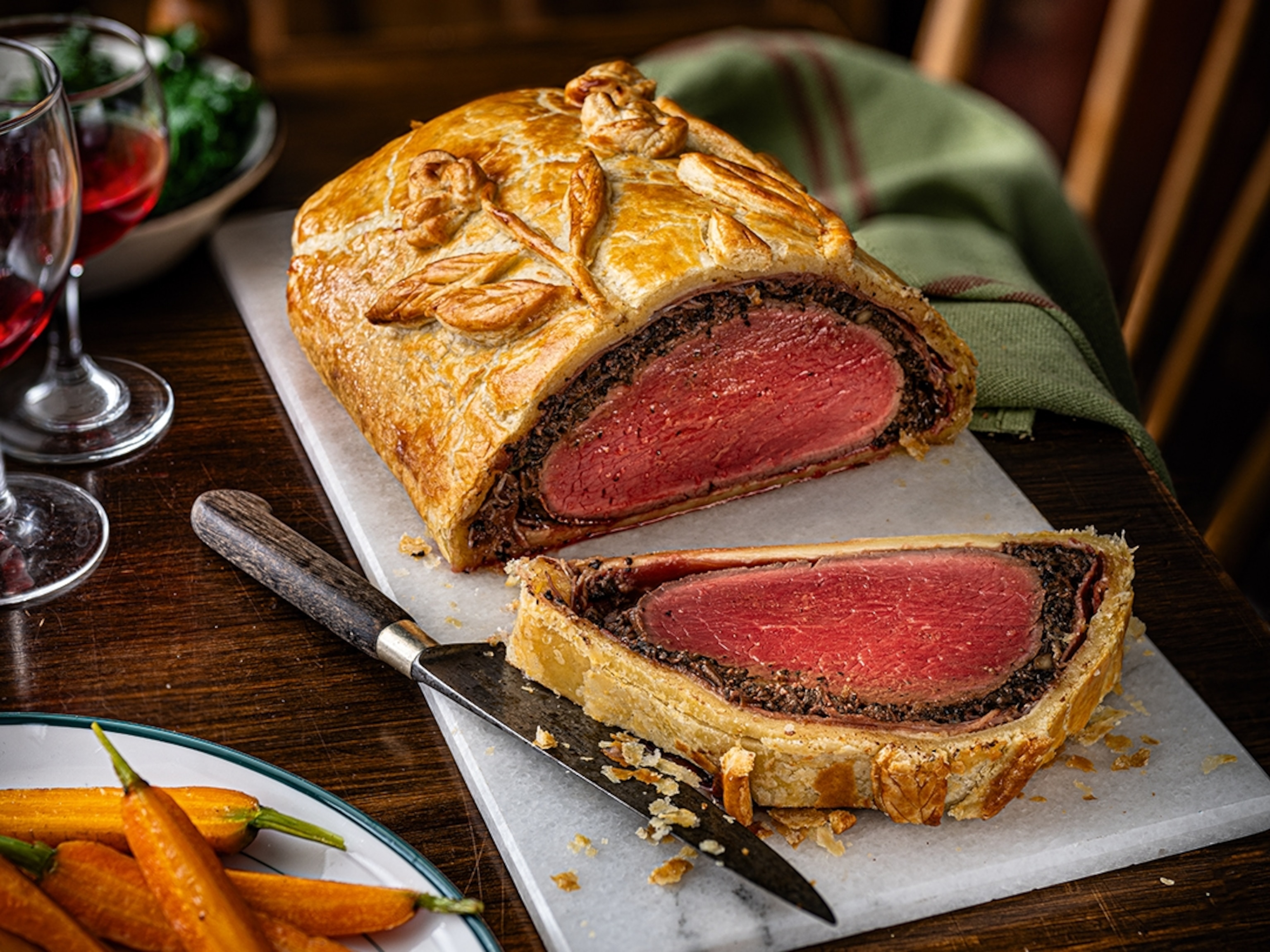
How centuries of immigration have shaped the culture and communities of Liverpool
The Scousers who call this powerhouse port city home get their nickname from a stew that serves as a metaphor for Liverpool’s melting pot of migrant cultures.
The old saying goes: ‘You are what you eat’. Which perhaps explains why the French have been known to refer, insultingly, to the English as ‘les rosbifs’, who’ve contributed to the cross-Channel slanging match with the term ‘frogs’, while denigrating the Germans with the monicker ‘krauts’, for good measure. So, it follows that Liverpudlians are ‘Scousers’. Although, in this case, the monicker has been far more favourably received — embraced even.
Scouse — in case you didn’t know — is a stew. In fact, it’s traditionally been Liverpool’s most popular dish. Scouse can contain potatoes, carrots, onions and, depending on the whim of the chef, beef or lamb. Proper scouse features a side of red cabbage or beetroot; ‘blind scouse’ is the usual stew minus the meat. The more you learn about scouse, the more you realise it’s less a defined dish and more a vague philosophy of flinging odds and ends in a pot.
“There’s no right or wrong with scouse,” says Carly Lea, of Maggie May’s Cafe Bar, in the city centre. “You can use whatever you have.” According to Carly’s regulars, Maggie May’s serves the definitive scouse. The dish before me is thick, piping hot: fuel for sailors wrestling rigging through Atlantic squalls. Most of the clientele in the cafe are locals, Carly tells me; she gets a lot of widowers ordering the stew, perhaps remembering home-cooked scouse dinners of the past. The walls are covered with maps and photos of Liverpool through the ages, its 19th-century incarnation as one of the world’s busiest port cities looming large. Outside the tall windows, afternoon crowds are flowing along Bold Street: the thoroughfare where ships’ rope was once made. These days, it’s full of independent shops: design emporiums, vintage clothes boutiques, little galleries. A few doors down is radical community bookshop News from Nowhere, which has sections labelled ‘Anti-Capitalism’ and ‘Dirty Thieving Bastards’ and shelves crammed with scouse history.

Scouse (the dish) derives from ‘lobscouse’: a stew once popular with sailors throughout Northern Europe. Quite whether it first came to Liverpool from Norway (‘lapskaus’), Germany (‘labskaus’) or Latvia (‘labs kauss’) or Wales (‘lobscaws’) — no one can say for sure, but most people agree it arrived on the docks from somewhere or other, and promptly made itself at home in local kitchens.
The dish is the perfect metaphor for the city it feeds — for Liverpool has historically been a stew of communities. This was Britain’s original international city — in the mid-19th century, it was known as ‘the New York of Europe’ for its dynamism and its diversity. Once handling 40% of world trade, it was the second city of the Empire, and it fancied the number-one spot. It lured people from afar with dreams of a better life both here in the city and on the countless ships departing Liverpool’s docks.
And if you know where to look, little islands of identity and faith are strewn about the city centre. Near the seafront is the Scandinavian Seamen’s Church, which serves herring lunches and shows Swedish films with subtitles. From here, I walk up the hill to the Georgian Quarter: a rapidly gentrifying enclave of lime tree-shaded avenues and ivy-swathed townhouses, from whose upper windows you can see the city spilling down to the docks. I pass the imposing iron cross outside the German Church, then the Greek Orthodox Church of St Nicholas — a replica of a Byzantine building that stands among the bazaars of Istanbul. Over the road is the dazzling Princes Road Synagogue, where the smartly dressed congregation is shuffling in for Jewish New Year. The 89-year-old caretaker, Eddie, has Spanish and Norwegian heritage rather than Jewish, but has been a friend of the synagogue since he was six, when he played on the tramlines outside. The area in which the synagogue stands is also home to one of the oldest continuous Black communities in Europe, stretching back over 300 years. Not so far away is the oldest mosque in the UK.

“Without immigrants, Liverpool wouldn’t be the city it is today,” says Stephen Yip. “Because we’ve welcomed so many people, our hospitality is second to none. As Scousers, we’ve all known what it’s like to be the stranger in the room. We’re resilient.”
Stephen runs children’s charity KIND, and recently stood as an independent candidate for Mayor of Liverpool. His father sailed to Liverpool from Guangdong in southeast China in the 1940s, to become a member of Europe’s oldest Chinatown — a place Stephen remembers as a kid, as being almost a city within a city. Residents smoked opium, banked at Chinese banks and gambled; his father won and lost a restaurant in a game of mahjong — in the same night. Today, flanked by stone dragons, is the largest Chinese arch outside the motherland. There are also bollards, lampposts and bins designed in the traditional Chinese style; restaurants serving fried conger eels, and Chinese street names. Blur your eyes and for the very briefest moment the Mersey breeze could almost feel like it’s blown in from the Yangtze.
But Stephen says the area is quieter now; others I meet lament that some of Liverpool’s historic communities aren’t quite as distinct as they used to be. Then again, the scouse stew has boiled so long, it’s not always easy to remember what went into the pot.

“Immigration has affected how we eat, how we talk, how we behave,” Stephen says. “But the sons and daughters of all immigrants eventually became Scousers. If we had a DNA test, we’d all be in for a shock.” Even if you don’t know where you’re from, it’s easy to tell where you’re going in Liverpool. Rising over the rooftops are two towers by which you can orientate yourself whenever you’re lost or drunk. In the 20th century — as other parts of the British Isles were engulfed in sectarian violence — Liverpool built Anglican and Catholic cathedrals at opposite ends of Hope Street — an accidental allegory. Consecrated in 1967, Liverpool Metropolitan Cathedral is a legacy of the Irish Catholics who first began arriving in the city during the 1840s Great Famine. Its popularity with the Irish community and resemblance to a teepee earning it the nickname ‘Paddy’s Wigwam’.
It’s a bright morning when I visit; blue light swims from the stained glass onto an Macedonian marble altar. Once a year in May, a shared service moves between here and its Anglican counterpart, Liverpool Cathedral, with the congregation processing down Hope Street. The latter is the fifth-biggest cathedral in the world — stepping inside, it’s a building of metaphysical dimensions, big enough to generate its own weather. Designed by Giles Gilbert Scott — the son of Sir George Gilbert Scott, the architect responsible for London’s St Pancras station — it feels like it could be a divine ticketing office where you might buy an advance single to heaven.

Liverpool has some truly astounding architecture: passengers disembarking a train at Lime Street Station emerge into a pocket of Athens, amid the porticoes of St George’s Hall and the World Museum. Those leaving a ferry at Pier Head might feel they’ve accidentally got off at Washington DC; towering above are the so-called Three Graces — the Royal Liver Building, the Cunard Building and the Port of Liverpool Building — whose crisp white facades seem to be auditioning for a spot on the National Mall. This is also the spot where teenagers come to snog after dark, and seagulls circle to steal their chips. Elsewhere in the city there’s a scruffy splendour: you glance up from empty crisp packets and nettles to see cupolas and Corinthian columns. But Liverpool’s good looks came at a price. “The magnificence of this city was made with the blood and pain of millions of people,” says Jean-François Manicom, curator at the International Slavery Museum. “And that is hard to face.”

In the 18th century, Liverpool was the main European port for the transatlantic slave trade; the city’s merchants profited from the trade between Africa and the Caribbean, using ships in which around 12% of enslaved people on board died. It’s a story told at the International Slavery Museum at the Royal Albert Dock, whose former warehouses stand where merchant ships once unloaded. It’s one of a number of museums lining these wharves — including Tate Liverpool, the Maritime Museum and The Beatles Story — that each tell a chapter in Liverpool’s story. Opened in 2007, the International Slavery Museum is the most recent addition. Jean-François notes, soberly, that this was after Britain had dedicated museums for both dog collars and lawnmowers. He alludes to other troubled chapters in Liverpool’s multicultural history — notably the race riots of 1919 and the Toxteth riots of 1981 — but he believes a kind of reconciliation is underway.
“The recognition of slavery here is now very active — but it’s also a new thing after decades of silence,” he says. “I’m proud of Liverpool. She’s the only city in Europe that’s worked to try to see its past, that doesn’t try to brush it under the carpet.”

One essential ingredient in a pot of scouse — and in the story of Liverpool — is water. Liverpool is unusual in the way it faces up to the sea — Bristol hides behind a gorge, Glasgow lurks up the Clyde, Southampton and Portsmouth have the shelter of the Solent. The great buildings of Liverpool, meanwhile, stand unblinking at the mouth of the Mersey, braced against the ocean gales that frequently rattle and rage against the city’s windowpanes.
I catch a train that runs north beside the docks. Along the shore is an endless succession of piers that, on maps, look like crooked teeth gnawing at the riverbanks. The dock’s decline in the late 20th century still casts a long shadow. Tourism and culture have been a small saviour for Liverpool’s economy, but the impact of Covid-19, and the loss of the city’s UNESCO World Heritage Site status earlier this year are new storms to be weathered.
I disembark where the yawning estuary meets the Irish Sea. The town of Crosby is where quiet suburbia lapses into wind-tousled dunes, which in gives way to a broad sandy beach. It’s a hazy evening in late summer; half of Liverpool is on the sands, soaking up the last golden beams. Here, too, on the beach are the Antony Gormley statues known locally as The Iron Men: figures that vanish and reappear with the travelling tide. Their bodies are seaweed-slopped, their bits are barnacled, they gaze across to the Wirral, the offshore wind farms and the Welsh hills.

Before them, the Liverpool shipping lanes on which millions sailed for the New World and took a last glance at the old. The Iron Men were originally meant be a temporary installation — bound for New York — but became permanent residents in 2005. Pranksters dress them in the colours of the city’s rival football clubs, Liverpool and Everton — even they are Scousers now. The official name of the artwork is Another Place — and so, too, the city on the Mersey is a distinct entity. Politicians from Westminster have misunderstood it, either arriving presenting themselves as saviours or holding Liverpool in contempt — often not realising that, to some degree, it’s a special territory between mainland Britain and the sea. It’s not an opinion shared by everyone in this city, but graffitied here and there is the allegiance to the old stew: ‘Scouse Not English’.
The sun sets on Crosby Beach. Two lovers are writing their names in the sand. A yoga teacher is imploring his customers to show him what they’re made of. The iron men are static but look eerily human. If you didn’t know about them, you might assume they were lost souls in peril far out in the tidal mud. But they’re immovable objects, built from the same iron as ships and capable of standing upright through the harshest storms.

In conversation with Glenn Whitter, founder of GNYP Gallery
What is it you love about Liverpool?
Liverpool was the jumping-off point for the whole world. And somehow the energy of the whole world has bounced back here — it’s imprinted in the streets. There’s a kind of energy in Liverpool that you can’t find in any other city in this country. There was a heyday here like you wouldn’t believe.
Why did you decide to create GNYP Gallery?
The plan was to challenge something I dislike about private galleries — the feeling you’re intruding. I thought: wouldn’t it be nice to have a space where people can just walk in and be themselves? We have works by artists from Ghana, Iran and Ireland. We’re bringing the world in, and that’s very much in the history of Liverpool.
Where’s your favourite place in the city?
The Waterfront — the Tate, the Maritime Museum. I like it late in the evenings, when you can almost imagine you have it to yourself.
Glenn is co-owner of 2 Blackburne Terrace, a B&B in the Georgian Quarter adjoining GNYP Gallery.
Top three insider tips
1. One of Liverpool’s strangest landmarks is the Williamson Tunnels. Dug on the orders of a local tobacco magnate, the cavernous underground network was built for a purpose that remains wholly unknown.
2. Look out for cinema showings of Almost Liverpool 8, a new documentary film exploring the area of Toxteth, which was engulfed by unrest in 1981.
3. A good place to stock up on scouse souvenirs is Merseymade. This small hub of shops and art studios with a cafe sells items created in the Liverpool area, from artisan gins to bespoke photography.

Essentials
Getting there & around
Direct trains run from London Euston to Liverpool Lime Street in 2h10m. It’s around 4h20m from Edinburgh by rail, and 3h30m from Cardiff, with a change at Crewe. EasyJet has direct, 50-minute flights from Belfast to Liverpool. With numerous sailings a week, Liverpool’s docks serve destinations in Northern Ireland, Ireland and Isle of Man.
Liverpool city centre is compact — you can walk from The Three Graces in the west to Liverpool Metropolitan Cathedral in the east in under 30 minutes. The Merseyrail network is useful for journeys to Liverpool John Lennon Airport or to places on the coast, such as Crosby, 20 minutes from Liverpool Central station. There’s an e-scooter trial currently taking place in Merseyside, operated by Swedish company Voi.
When to go
Expect rain at some point during your stay, whatever the season. Winter temperatures average 8C, summer 20C.
Where to stay
Doubles at 2 Blackburne Terrace, a luxury B&B in a Victorian mansion, from £162 a night.
How to do it
The Hard Days Night Hotel offers two nights in a Beatles-inspired Luxury Room from £399 for two people, B&B. This includes a Magical Mystery Tour of the city by bus, taking in key Beatles sites, and a visit to The Beatles Story.
Published in the December 2021 issue of National Geographic Traveller (UK)
Follow us on social media
Facebook | Twitter | Instagram







